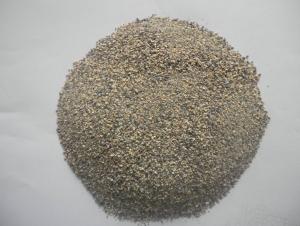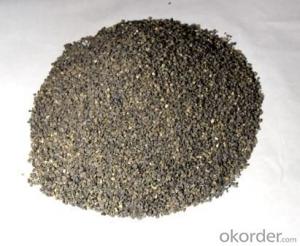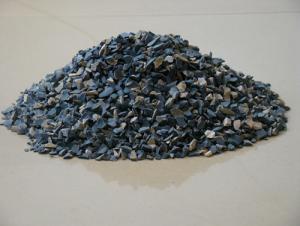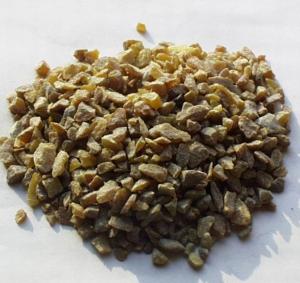Raw Materials for Refractory - High Content Manesia Brick
- Loading Port:
- China Main Port
- Payment Terms:
- TT OR LC
- Min Order Qty:
- -
- Supply Capability:
- -
OKorder Service Pledge
OKorder Financial Service
You Might Also Like
Product Description
Features:
1. Low thermal conductivity, good thermal insulation performance.
2. Long service life, easy operation, could be shaped freely
3. Product specification: standard form, normal standard, shaped and special shaped bricks.
4. Can be used in various kilns because of its cheapness and general tray package. Among all of the refractory materials, it is the most widely used.
Applications:
1. Carbon bake furnaces in the aluminum industry
2. Preheat zones and cyclones of rotary cement kilns
3. Insulation for glass tanks
4. Fireplace and pizza ovens
5. Coke ovens
6. Blast furnaces
7. Reheating furnaces
8. Suspended roofs
9. Lime kilns
10. Chimney
Specifications:
Thermal Insulation Fire Clay Brick, Firebrick Refractory For Coke Ovens, Blast Furnaces, Suspended Roof
Technical data
Item | AL-30 | AL-34 | AL-38 | AL-45 | AL-55 |
AL2O3 % (min) | 30 | 34 | 38 | 45 | 55 |
Fe2O3% (max) | 3 | 3 | 2.8 | 2.8 | 2.6 |
Refractoriness | 1670°C | 1710°C | 1750°C | 1770°C | 1770°C |
Refractoriness under load, 0.2MPa, (°C) | 1250 | 1300 | 1350 | 1450 | 1470 |
Apparent porosity (%) | 22-26 | 22-26 | 20-24 | 20-22 | 20 |
Bulk density (g/cm³) | 1.9-2.1 | 1.95-2.1 | 2.1-2.2 | 2.15-2.22 | 2.2-2.35 |
Cold crushing strength (MPa) | 20 | 25 | 30 | 35 | 40 |
Thermal expansion at 1000°C (%) | 0.8 | 0.6 | 0.6 | 0.5 | 0.4 |
Competitive Advantage:
1 Competitive Price. Make the products competitive in your market.
2 Abundant Experience. Prevent cracks and twist in bricks.
3 Different Moulds. Save mould fees for you.
4 Strict Quality Control. Meet clients’ quality requirement.
5 Large stocks. Guarantee prompt delivery.
6 Professional Packing. Avoid damage and secure the goods in transportation
FACTORY:


- Q: Do you know what the main indicators are for the inspection of refractory materials? Thank you very much for your requests and reports
- The main indicators of refractory material inspection must be fire resistance materials, flame retardant, a subdivision of lecture, ignite the smoke toxicity, smoke density, heat release and flue gas;
- Q: What brands are the best in the A-level refractory materials?
- A-level refractory materials: Dulux, Nippon, Carpoly, Skshu and Smoz. Fireproof boards are the most common materials in the market. There are two are commonly used: one is HPL decorative plastic laminates with advantages of fire- ,moisture-, wearproof and oil resistance as well as easy to wash, besides it has a great variety of colors and types. Another one is glass fiber magnesite fireproof board, the out layer of which is decorative materials while the inner layer is mineral magnesium fireproof materials which can resist a high temperature of 1,500 Celsius degree but it is not a good ornament.
- Q: As for fireproofing material rock wool and glass wool, which one is better?
- As for fireproofing effect, the effect of rock wool is certainly better than glass wool , the highest temperature of rock wool is 1100 ℃, but the temperature of glass wool is only 600 ℃. In addition, if it's used in the external walls, then,unit weight of the glass wool is limited,and high unit weight can only be 60-90, but unit weight of rock wool can reach over 140, now external wall can't use glass wool, and only rock wool is A class fireproofing material. glass wool has lower thermal conductivity, rock wool has longer fiber length,as for the price, tons price of glass wool is more expensive than rock wool, but if it's acculated by square, square price of glass wool is cheaper than rock wool.
- Q: Who knows what kind of material the fire-proof plate use, and is it good?
- It is the decorative board made by adopting silicious material or calcareous material as the main raw material, and blending them with certain proportion of fibrous material, lightweight?aggregate, adhesive and chemical?additive before steam pressing. It is a kind of new material and more and more frequently used currently not only for it is fireproof. Construction of the fire-proof plate has higher requirements on the adhesive, and the price of the fire-proof plate with better quality is more expensive than that of the decoration panel. The thickness of the fire-proof plate is generally 0.8mm, 1mm, and 1.2mm. So it is the best material for making cupboards.
- Q: Firing high temperature kiln of refractory and internal temperature being as high as 1600 ℃, metal heat exchanger can't use, how to do?
- Directly using silicon molybdenum kiln, the temperature is better. Now using the electricity is cheaper than the price of other fuels.
- Q: what's the detailed address of fireproof and thermal inuslation matertial market?
- following are the detailed address of fireproof and thermal inuslation matertial market: Central China Building decoration materials market,Hanxi 1 road No 95, Xinyongan Tangcai decoration material makert, Jianghan district Tangcai road No 53, Baoye decoration material wholesale market, Wuhan Wuchang district Minzhu road No 620.
- Q: Fire insulation and fireproof insulation board materials What is the difference in performance?
- Fireproof materials and insulation materials, refractories not the same thing, but some insulation materials are fire resistant and refractory. Fireproof material is a synthetic material characteristics of fire resistance or the material itself is a high temperature resistant, flame-retardant. Fireproof materials are mostly used for construction, playing an important role in fireproof today in various forms.
- Q: What kinds of refractory materials that uses a-Al2o3 powder? What are the purpose of it?
- 04La-Al2O3 powder is a alumina powder whose raw material is industrial aluminum oxide which has been calcined at high temperature. It is a good polishes for ceramics and jade, meanwhile, it is also an important raw material for high-end refractory materials. The technical indicators parameters A1023 mark A1535 chemical composition AL2O3≥ 99.92 3%, ≥ 3.10FE203≤ 0.799 Refractory calcined alumina powder (a-Al2O3) 1.2 true density (g & # 47, by fully ground powder made of different fineness .O.10 0.07 0.04NA2O≤ 0.93a-Al2O3 (%) ≥ 95 95 primary crystallization average grain (um) 2 ~ 3 3 ~ 5 average particle size (um) 40 ~ 602.6SIO2≤ 0.1 0.15B2O3≤ - 0, glass, engineering ceramics typical use electronic ceramic insulating ceramic refractory ceramic wear 3
- Q: What is refractory?
- Refractory materials are widely used in metallurgy, machinery manufacturing, chemical industry, petroleum, power and other industrial fields. It is an inorganic nonmetallic material mostly used in metallurgical industry with the minimum refractoriness of 1580 ℃, able to resist high temperature without softening (annealing). It accounts for 50% to 60% in total output. Refractoriness refers to refractory's ability to resist fire.
Send your message to us
Raw Materials for Refractory - High Content Manesia Brick
- Loading Port:
- China Main Port
- Payment Terms:
- TT OR LC
- Min Order Qty:
- -
- Supply Capability:
- -
OKorder Service Pledge
OKorder Financial Service
Similar products
Hot products
Hot Searches
Related keywords
























